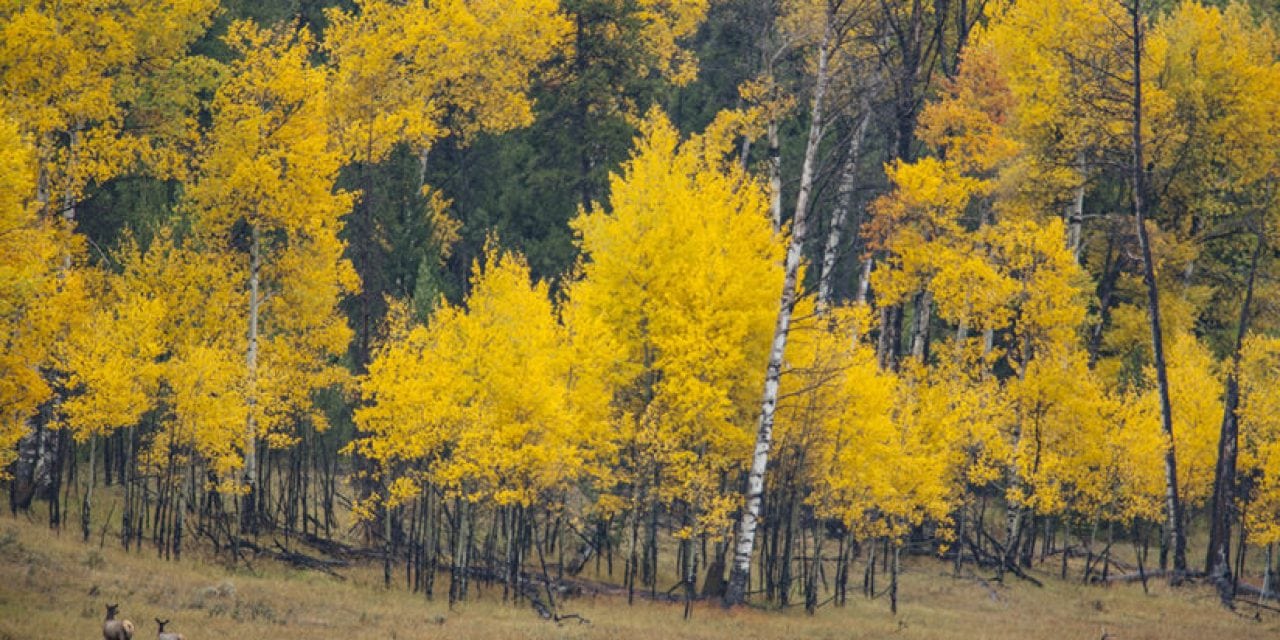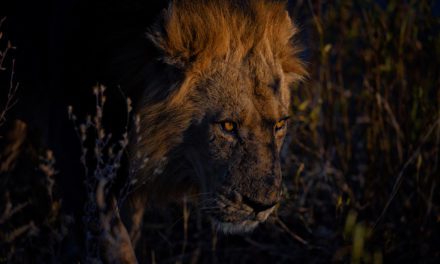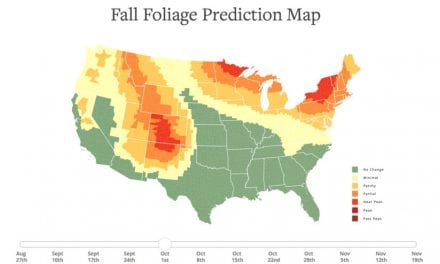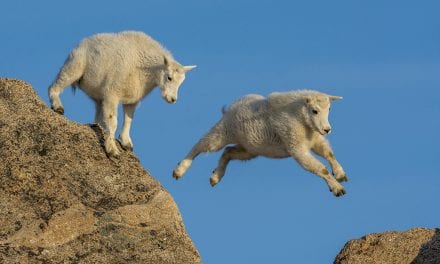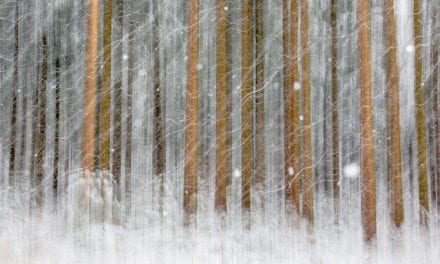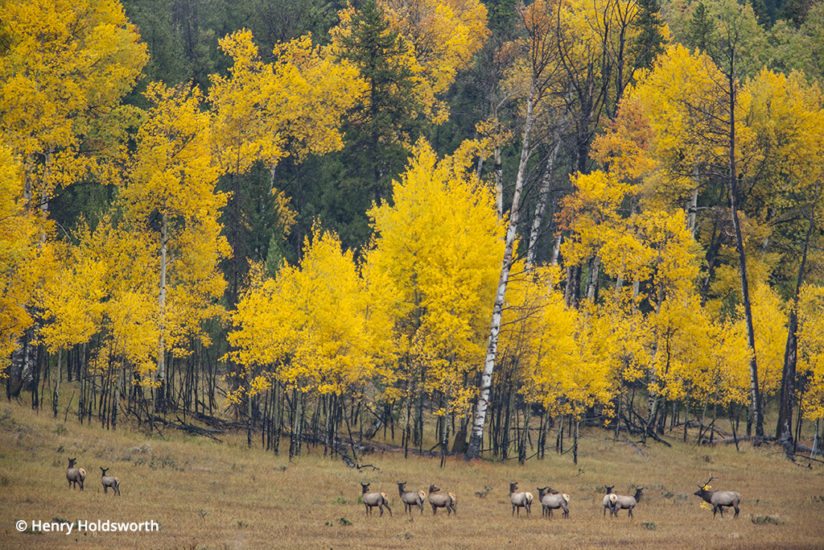
A photographic journey to the valley of Jackson Hole in Wyoming can be a rewarding experience at any time of the year, but the combination of dramatic weather, interesting light and fleeting color makes fall an ideal time to visit Grand Teton National Park. Not only do you have a chance to shoot snow-capped peaks above golden aspen, cottonwood and willow, but you will also find many of the valley’s plentiful wildlife species in prime condition and at peak activity during their annual mating seasons.
These mountains were first photographed in 1872 by William Henry Jackson and have been drawing photographers from around the world ever since. For me, it is the ever-changing combinations of wildlife, scenery, weather and light that captivated me enough to move to the area some 35 years ago and still manages to inspire my photographic interest on an almost daily basis.
Located in northwest Wyoming and just south of neighboring Yellowstone National Park, Jackson Hole is home to the Grand Tetons, one of the most majestic mountain ranges in the country. What makes these mountains unique, when viewed from the eastern side, is their dramatic rise of over 7,000 feet above the plains below, with no foothills to obscure the view. In addition to the rugged peaks that command your attention, the base of the range is dotted with pristine lakes, and the meandering Snake River winds its way through the center of the valley, providing ample water for trees and wildlife.
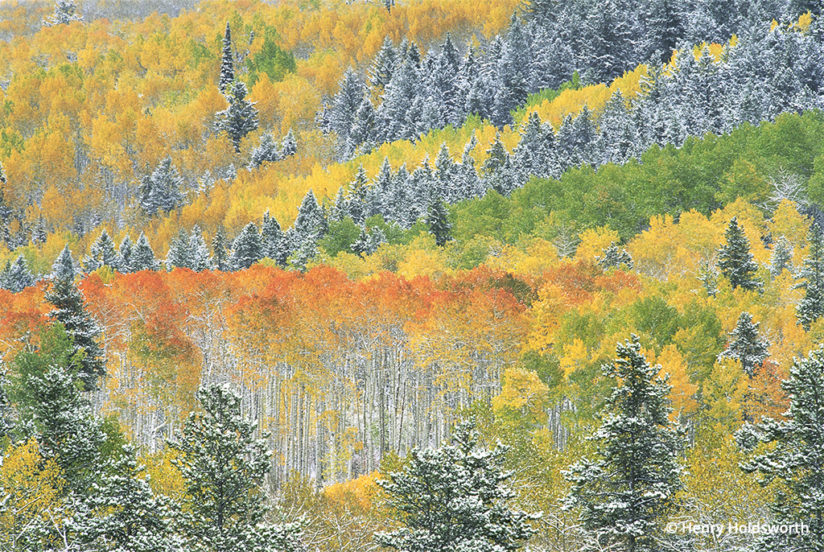
The approach of fall and the intensity of the colors can vary year to year depending on summer moisture and early cold snaps. I have seen it snow every month of the year in Jackson Hole, and it almost certainly will snow in September and October. Peak Grand Teton fall color will typically arrive sometime in the last two weeks of September, but I have seen it differ from about Sept. 21 to Oct. 1 over the last 10 years. Color will also peak at different locations within the valley at different times, generally in the northern end of the park first and working its way south.
To catch the best light at almost any location, you should be ready before sunrise. With the Tetons running north to south along the west side of the Jackson Hole Valley, sunrise is typically when the peaks catch their best light. Sunsets can also be spectacular at times, but the mountains will be more of a silhouette as the sun goes down behind them.
Recommended Grand Teton Fall Color Locations
Grand Teton National Park is a small park by Wyoming standards, at 310,000 acres, or 485 square miles, and it is very easy to drive around the whole park in one day. However, there are enough photogenic locations within the park and the surrounding Bridger-Teton National Forest to keep you photographing for a week or two without shooting the same location twice. There are three main loops to the park’s road system, and each has its own photographic elements of interest.
Oxbow Bend

Probably the best and most iconic location to shoot fall colors is the Oxbow Bend of the Snake River. It is located on the northern end of the park, just one mile east of where the two main park roads meet, roughly three miles inside the Moran entrance to the park on Highway 191. The Oxbow is a wide, slow-moving section of the Snake River, perfectly situated below Mt. Moran, with a beautiful aspen grove as a foreground. It is a great place to catch reflections of the mountains and brilliant colors as early-morning mist rises off the waters of the Snake. It can also be a great place to see wildlife such as moose, grizzly bears, elk, mule deer, coyotes, river otters, beaver, white pelicans, Canada Geese, ducks, blue herons, osprey and bald eagles. It’s a very popular location, so expect to have lots of company during peak color. My advice is to arrive early and scope out your favorite spot the day before. If the winds stay calm, it is also worth a return visit later in the morning, using a polarizing filter to pop the colors and the reflection.
Schwabacher’s Landing

Another popular location along the Snake River is Schwabacher’s Landing, with slow water for reflections and ample cottonwood trees to add color to your landscapes. It is located three miles north of Moose Junction on Highway 191. There is currently no sign indicating where it is, but if you turn off the highway at the only stop sign, it’s on your left if you are heading north; a short road will take you down the hill to the edge of the river. Go as far as you can (about one mile) until it dead-ends in the parking lot. Park here and walk 30 yards to the edge of this side channel for a great reflection of the main body of the Tetons.
You can also walk about 300 yards upstream and find another classic shot where the beavers have dammed up the water to form nice pools for reflections. Schwabacher’s can also be a good place to find moose, ducks, herons and beavers. It is best at sunrise, but it can also work for sunset as the sun goes down straight behind the mountains at this time of year. If you go in the evening, you also have better chance of catching the beavers at work. They typically come out of their lodges each night between 5 and 6 p.m. Sunrise and sunset are approximately 7 a.m. and 7 p.m., respectively, at this time of the year.
Snake River Overlook
The Snake River Overlook is another classic location made famous by Ansel Adams’ photograph “The Tetons and The Snake River,” taken in 1942. Adams was certainly one of my inspirations and mentors when I was starting out in photography. You can still see the view that he photographed back then, and there can be plenty of color along the opposite river bank below in fall. This is one of the few places in the park that the river actually bends toward the mountains, which makes for an excellent leading line into your photograph. It is also a great place to shoot a panoramic image of the range. Be advised, however, the trees in the foreground have grown since 1942, leaving it harder to see the complete curve of the river. Snake River Overlook is located on Highway 191 about 6 miles past Moose Junction, heading north. There is a large turnout on the left just before you get into the trees.
Gros Ventre Road to Antelope Flats Road Loop
Although Grand Teton National Park is well known for a variety of large mammals and large herds of elk, by far the most iconic animal associated with Jackson Hole is the moose. A large bull moose is at the top of the list for many nature photographers, and Jackson Hole is one of the best places to photograph moose in the continental United States.
In recent years, the best place to find moose during the fall rut has been along the Gros Ventre River in the southern end of the park. To get there, drive approximately five miles north of the town of Jackson and take your first right at the small sign that reads “Kelly.” Once you turn to the east, the Gros Ventre Road parallels the river, and from the turnoff to the campground is the most productive moose habitat. Moose do not like the heat, so early morning or late evening photography is critical to your success. Moose often head across the river into the National Elk Refuge just after sunrise to escape the heat of the day and stay out of sight until close to sunset. If the day is cooler or cloudy, your shooting time could be slightly extended.
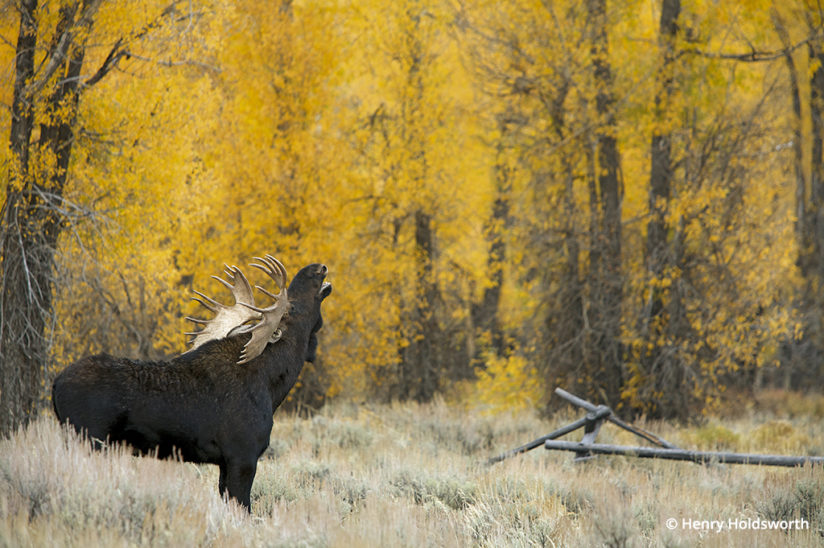
There are plenty of willow and cottonwoods along the river, which can add color to your images, and overcast, rainy or snowy days can help lower contrast, keeping the shadows from a bull moose’s antlers to a minimum and lending more saturation to the color in the trees.
If you continue on the Gros Ventre Road through the tiny town of Kelly and head north over Ditch Creek, you will come to an intersection where you can turn left or continue straight. Going straight takes you to the base of Shadow Mountain, which can be quite colorful with aspen trees in some years, while going left leads down Antelope Flats Road and back to Highway 191. Antelope Flats Road will take you past Mormon Row, where the two famous Moulton Barns are located. The north barn is right next to the road and can’t be missed. To get to the southern barn, turn south into the gravel road across from the northern barn. The southern barn is roughly a quarter of a mile down the level dirt road known as Mormon Row, named for these early Mormon settlers who homesteaded this part of the valley in 1896. The southern and perhaps more iconic barn was built in 1914 and has just received a new roof.
Throughout the entire drive around this loop, you might see herds of pronghorn or bison and the trees along Ditch Creek can make a colorful foreground or background when shooting animals or the mountains. When you are done with this loop, take a right turn onto the main highway heading north and then an immediate left. This will place you at the Blacktail Ponds Overlook, a spot to shoot the mountains with colorful willows as a foreground and a good place to look for moose.
Moose-Wilson Road
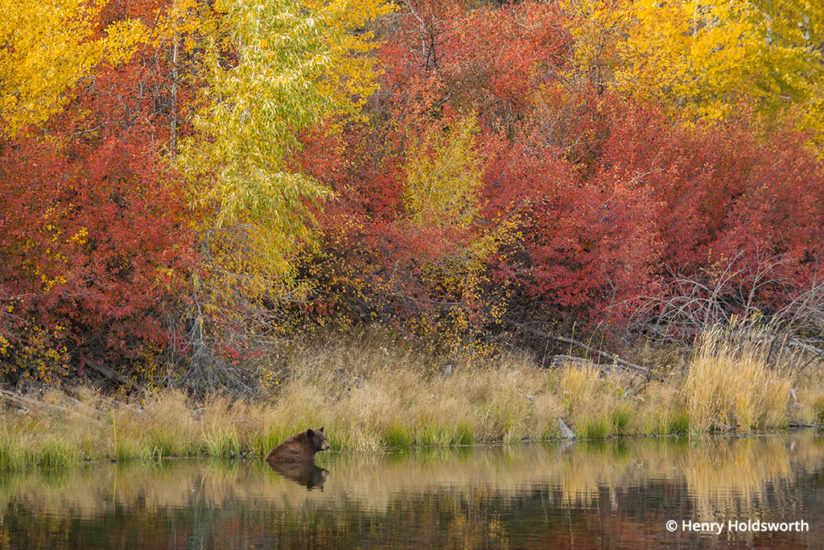
Another popular and productive road you might try is the Moose-Wilson Road. It is a narrow, half-paved and half-gravel road that winds its way along the base of the mountains between the Jackson Hole Mountain Resort at Teton Village and the Craig Thomas Discovery & Visitor Center in the town of Moose, near the park headquarters. There are beaver ponds and wetland areas along the road that are perfect moose habitat, and an abundance of color with aspen trees and hawthorn bushes at the road’s edge.
In the fall, the hawthorn bushes are loaded with berries, which draws black bears in close. However, there is not much parking to be found, so it can get a little congested and tricky to find a spot to pull over. Every so often, a grizzly bear shows up and sits in the middle of the road eating berries, and that typically leads to a road closure to keep people and bears safe. It is also worth checking out the visitors center at the Laurance S. Rockefeller Preserve and taking a hike up to Phelps Lake from there.
Other Locations
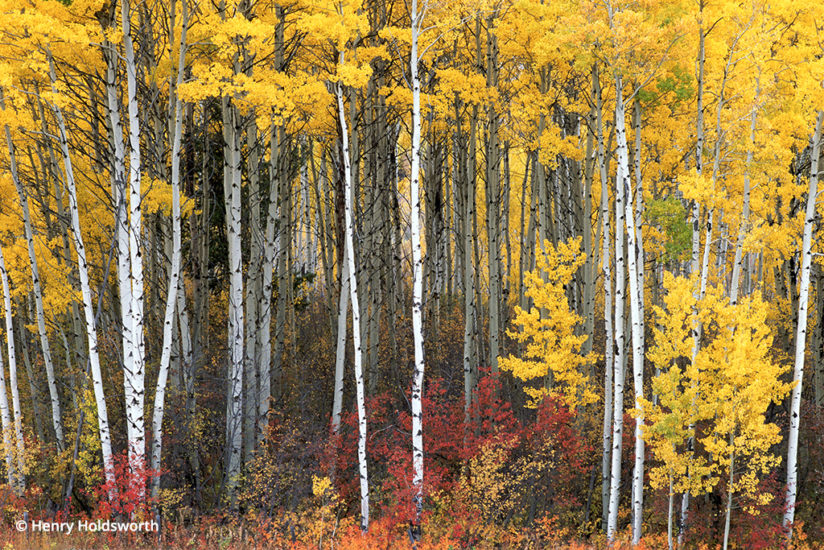
There is no shortage of vantage points to photograph from in the Tetons. If you have the time, there are a few other spots to check out. Jenny Lake, Taggart Lake, String Lake, Leigh Lake and Jackson Lake all lie at the base of the mountains and can be great for reflections on a wind-free morning or evening. They do not offer as much color as the other spots I mentioned but always offer interesting shots. The Snake River Canyon, south of the town of Jackson and running along the river toward the town of Alpine, is a place you can find a mix of aspen, scrub oak and mountain maple, which may add a few more reds to your color palette. Or you can take the Gros Ventre Road all the way to Slide Lake and beyond to the Red Hills to look for aspens in good color.
Tips For Fall Color Success
Get out early, and hope for some weather or clouds to make for more interesting atmospheric conditions. Come prepared for any type of weather, as I have seen it snow one minute and be sunny the next many times, with temperatures ranging from 10 degrees in the morning to 70 degrees in the afternoon on the same day. Plan on using split neutral density filters or HDR to get better foreground detail without blowing out the high peaks at sunrise or sunset. And, of course, be courteous of other photographers trying to enjoy the same experiences you are.
See more of Henry Holdsworth’s work at wildbynatureshop.com.
The post Grand Teton Fall Color appeared first on Outdoor Photographer.

